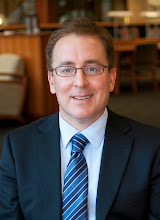Abortion clinics have been hotly contested places on our expressive topography for several decades. As many know, clinic protesters have sometimes engaged in destructive and violent behavior. The Supreme Court has addressed limits on public speech near such places on several occasions. It has generally upheld laws that facilitate acccess to the clinics. In one case, it also upheld a restriction that precluded sidewalk counselors and others from coming within 8 feet of a clinic patron without her consent. These "buffer" and "bubble" provisions can have a substantial negative effect on the conveyance of messages at abortion clinics. The buffer may separate speakers from the "contested" place, depriving speakers of important symbolic and other advantages. The bubble may preclude certain forms of conversation and the distribution of literature in "embodied" places (personal space).
The Third Circuit recently invalidated a Pittsburgh ordinance that combined buffer and bubble elements. The effect of the combination in this case was apparently to preclude speakers from approaching clinic patrons, even for the purpose of handing out leaflets, and to sometimes prevent them from speaking to patrons in a normal conversational tone.
As I note in the book, the abortion clinic cases are some of the most difficult in terms of reconciling fundamental First Amendment principles relating to public speech and audience interests in dignity and repose. Ultimately, however, speakers must be permitted to approach audiences in public forums for the purpose of leafletting and engaging in conversation or counseling. That is the principle the Third Circuit appears to have upheld in its decision.
The court's decision is here.
Subscribe to:
Post Comments (Atom)


No comments:
Post a Comment